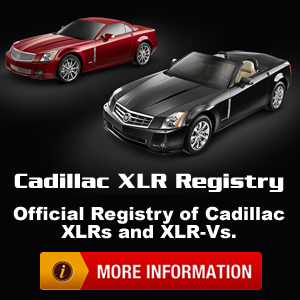Document ID: 1739179
#05-03-10-019: Information on Run Flat, Zero Pressure or Extended Mobility Tires (EMT) and Unique Servicing Techniques - (Dec 6, 2005)
Subject:Information on Run Flat, Zero Pressure or Extended Mobility Tires (EMT) and Unique Servicing Techniques
Models:2004-2006 Cadillac CTS-V
2005-2006 Cadillac XLR
2006 Cadillac XLR-V, STS-V
1994-2006 Chevrolet Corvette
This bulletin is being revised to add vehicles, model years, tire manufacturers, and additional information. Please discard Corporate Bulletin Number 33-35-02A.
Tire Manufacturers
GM currently uses tires from three manufacturers that can continue to be driven on while completely deflated. Each brand has their own slogan for this capability.
• Goodyear -- Extended Mobility Tire (EMT)
• Michelin -- Run Flat
• Pirelli -- Zero Pressure (ZP)
Characteristics and Added Capability
The tires above can be operated at up to 89 km/h (55 mph) for 160 km (100 mi) with zero air pressure. All vehicles originally installed with this style of tire are factory-equipped with a tire pressure monitoring system (TPM). Each wheel position has a sensor which transmits inflation pressures to a receiver that displays actual pressures to the driver. This system immediately alerts the driver of a loss of air pressure in any tire, as it is possible to drive with zero air pressure and not notice any difference in vehicle handling.
Mounting and Dismounting
Due to the unique reinforced sidewall construction of this type of tire some special servicing techniques are required. This mainly pertains to mounting and dismounting the tire from the wheel.
Caution: Inflation pressure exceeding 276 kPa (40 psi) may be required to seat the beads during mounting. To prevent serious injury, only specially trained tire technicians should mount or dismount these tires. A tire inflation safety cage and clip-on air hose must be used. A rim clamp/European style tire changer is also recommended to mount or dismount run-flat type tires.
If a "run-flat" style tire must be dismounted for non-tire related reasons such as a wheel, valve, or sensor replacement, it is recommended that the job be sublet to an authorized tire service facility if your dealership DOES NOT have qualified personnel and the necessary equipment described above.
Extreme care must be taken that the tire pressure warning sensor and O-ring inside the tire are not damaged. Some tire changing equipment companies such as Coats* and Hunter* have put together a procedure booklet for these tires.
Caution: Even when using a safety cage to seat the tire bead, do not exceed 552 kPa (80 psi). If the bead does not seat by 552 kPa (80 psi), you should deflate the tire and change the position of the tire in relation to the wheel. Use of tire lubricant is also advisable.
*We believe these sources and their equipment to be reliable. There may be additional manufacturers of such equipment. General Motors does not endorse, indicate any preference for, or assume any responsibility for the products or equipment from these firms, or for any such items which may be available from other sources.
GM bulletins are intended for use by professional technicians, NOT a "do-it-yourselfer". They are written to inform these technicians of conditions that may occur on some vehicles, or to provide information that could assist in the proper service of a vehicle. Properly trained technicians have the equipment, tools, safety instructions, and know-how to do a job properly and safely. If a condition is described, DO NOT assume that the bulletin applies to your vehicle, or that your vehicle will have that condition. See your GM dealer for information on whether your vehicle may benefit from the information.
WE SUPPORT VOLUNTARY TECHNICIAN CERTIFICATION
© 2008 General Motors Corporation. All rights reserved.
 and the run flats were about $600 more. I hope I dont eat my words but I thought it was worth the gamble. Dave
and the run flats were about $600 more. I hope I dont eat my words but I thought it was worth the gamble. Dave and the run flats were about $600 more. I hope I dont eat my words but I thought it was worth the gamble. Dave
and the run flats were about $600 more. I hope I dont eat my words but I thought it was worth the gamble. Dave





